Lincoln National Forest
- January 4, 2024
- 0 comment
Located within the southern Rocky Mountains of New Mexico, the Lincoln National Forest stands as a sprawling testament to the mesmerizing beauty of nature and the rich tapestry of American history. Encompassing a vast expanse of 1.1 million acres, this forest is a haven for outdoor enthusiasts, history aficionados, and conservation advocates alike. Three major mountain ranges, the Sacramento, Guadalupe, and Capitan, stretch across its southeastern landscape, offering elevations ranging from 4,000 to 11,500 feet and traversing five distinct life zones.

From the Chihuahuan desert to sub-alpine forests, the Lincoln National Forest provides a diverse and enchanting array of ecosystems. Home to the iconic Smokey Bear, born from the forest’s legacy in 1950 and boasting recreational offerings ranging from hiking and camping to winter sports, this natural sanctuary beckons visitors to explore its scenic wonders and contribute to the preservation of its ecological treasures. Welcome to the Lincoln National Forest, where history, nature, and adventure converge in a harmonious embrace.
Characterizing Features of the Lincoln National Forest
- Diverse Ecosystems: The Lincoln National Forest is characterized by a remarkable diversity of ecosystems, ranging from the arid Chihuahuan desert to the sub-alpine forests. This diversity is influenced by the forest’s vast expanse, covering elevations from 4,000 to 11,500 feet. Visitors can witness a transition through five distinct life zones, each offering unique flora and fauna. This ecological richness contributes to the forest’s appeal for nature enthusiasts and researchers alike.
- Three Major Mountain Ranges: The presence of three major mountain ranges Sacramento, Guadalupe, and Capitan defines the topography of the Lincoln National Forest. These rugged landscapes not only add to the scenic beauty but also contribute to varied recreational opportunities. From the heavily forested southern Sacramento Mountains to the remote and rugged Guadalupe Mountains, each range offers a distinctive experience for hikers, campers, and wildlife enthusiasts.
- Birthplace of Smokey Bear: The Lincoln National Forest holds historical significance as the birthplace of Smokey Bear, the iconic symbol of fire prevention. In 1950, Smokey Bear was found orphaned during the devastating Capitan Gap fire. Rescued and rehabilitated, Smokey Bear became a living symbol of fire awareness, eventually residing at the National Zoo in Washington D.C. The forest honors this legacy, serving as a reminder of the importance of wildfire prevention and conservation.
- Historic Lookout Towers: Scattered throughout the forest, historic lookout towers stand as silent sentinels, reflecting the importance of fire prevention. Of the sixteen towers once present, nine remain, and six are listed on the National Register of Historic Places. These structures, including the Montjeau Lookout and the Sacramento Lookout, offer a glimpse into the forest’s fire management history. Some lookout towers are open to the public, providing a unique perspective on the forest’s vast landscapes.
- Preservation of Wilderness Areas: The Lincoln National Forest is committed to preserving its natural beauty through designated wilderness areas, namely the Capitan Mountains Wilderness and the White Mountain Wilderness. These areas, protected by federal legislation, offer a haven for untouched landscapes, diverse wildlife, and a retreat for those seeking solitude in nature. Visitors must adhere to “Leave No Trace” principles, ensuring the preservation of these pristine environments.
- Forest Economics and Resource Management: Beyond recreation, the forest plays a crucial role in the local economy through resource management. Grazing, logging, and tourism contribute to the economic stability of the region. Timber resources have been utilized since the late 19th century, connecting the forest’s economic history to the westward expansion of settlements. Balancing conservation and resource utilization remains a key challenge, emphasizing the importance of sustainable practices.
- Year-Round Recreation: The Lincoln National Forest stands as a year-round recreational destination, catering to a variety of outdoor activities. From the floor of the Chihuahuan Desert to the snowy peaks of the Sacramento and White Mountains, the forest offers developed and dispersed camping, hiking, equestrian and mountain-biking trails, and winter sports. The diversity of recreational opportunities ensures that visitors can enjoy the forest’s beauty in every season.
- Tourism and Economic Impact: Tourism, often referred to as “dispersed recreation” by the Forest Service, contributes significantly to the forest’s economic impact. The forest attracts over 700,000 visitors annually, providing a direct economic boost to the region. However, the tourism sector is also vulnerable to external factors such as fire, drought, and economic instability, highlighting the need for sustainable management practices.
- Cultural and Historical Significance: The Lincoln National Forest is steeped in cultural and historical significance, with Lincoln County being the site of the 1878-79 Lincoln County War. Historical events, including the siege of Alexander McSween’s house in the village of Lincoln, contribute to the forest’s narrative. Federal troops’ intervention in 1879 to restore law and order adds a layer of historical resonance to this vast natural expanse.
- Contribution to Environmental Balance: Established in 1902 to balance conservation, resource management, and recreation, the Lincoln National Forest remains integral to maintaining environmental balance. Clean air, water, and soil contribute essential elements to the region. The forest’s strategic location near the Texas border encompasses lands in Chaves, Eddy, Lincoln, and Otero counties, highlighting its role in preserving and enriching the ecological integrity of the surrounding areas.
History
The history of the Lincoln National Forest is a captivating journey through time, shaped by the forces of nature, human endeavors, and a commitment to environmental stewardship. Established by Presidential Proclamation in 1902 as the Lincoln Forest Reserve, the roots of this expansive forest stretch back to the early 20th century. Encompassing a vast 1.1 million acres in southeastern New Mexico, the forest’s origins can be traced to several distinct forest reserves and national forests designated between 1902 and 1908.
The region that would become the Lincoln National Forest was once inhabited by the Niit’a-héõde band of the Mescalero Apache in pre-Columbian times. The forest’s diverse landscapes, from desert shrubs to densely forested mountains, have witnessed the ebb and flow of both natural and human history. In the early 1900s, individual units like the Lincoln Forest Reserve, Gallinas Forest Reserve, Guadalupe National Forest, and Sacramento National Forest dotted the south-central New Mexico landscape. These areas contained lands in various mountain ranges, including Guadalupe, Sacramento, Sierra Blanca/White Mountains, Capitan, and Gallinas. The forested heights of the Sacramento Mountains near Alamogordo were reserved by the Sacramento National Forest in 1907, highlighting the early efforts to manage and protect these vital resources.
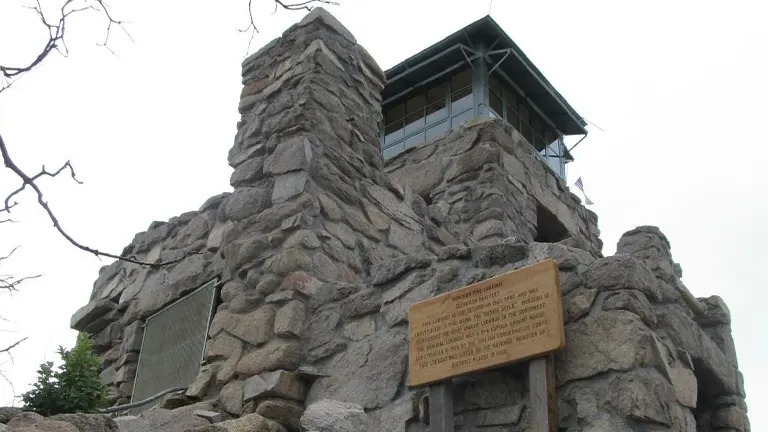
The process of consolidation and unification began in 1908 when President Theodore Roosevelt signed Executive Order 908. This order combined several national forests in the Southwestern states into larger units. The Alamo National Forest emerged, encompassing the existing Guadalupe and Sacramento National Forests. A pivotal decision to combine these forests into the Alamo National Forest, headquartered in Alamogordo, laid the groundwork for the modern Lincoln National Forest.
On June 6, 1917, President Woodrow Wilson signed an Executive order transferring the lands of the Alamo National Forest to the control of the Lincoln National Forest. This marked a significant expansion, incorporating the public lands around the Sacramento and Guadalupe Mountains. The forest’s boundaries experienced another shift in 1945 when administrative control of the former Gallinas National Forest was transferred to the Cibola National Forest, officially completed in 1958.
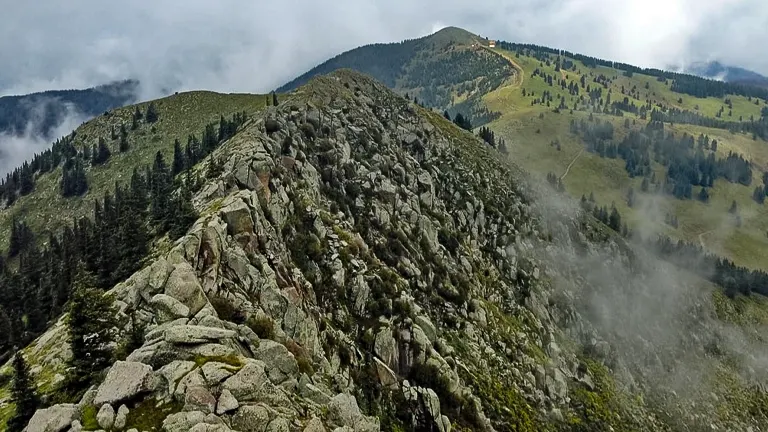
Today, the Lincoln National Forest is divided into three separate units: the Sacramento Ranger District, the Smokey Bear Ranger District, and the Guadalupe Ranger District. Each district tells a unique story, contributing to the rich tapestry of the forest’s history. The Lincoln National Forest is not just a repository of trees and landscapes; it is a living testament to the delicate balance between conservation, resource management, and recreation. Its headquarters in Alamogordo, N.M., along with local offices in Carlsbad, Cloudcroft, and Ruidoso, symbolizes the ongoing commitment to the sustainable coexistence of nature and human activity within this vast and remarkable forest.
Importance in Conservation and Recreation of Lincoln National Forest
The Lincoln National Forest holds profound importance in both conservation and recreation, embodying a harmonious balance between preserving natural ecosystems and providing recreational havens. Covering an extensive 1.1 million acres in southeastern New Mexico, the forest contributes significantly to conservation efforts by safeguarding a diverse array of environments, ranging from the arid Chihuahuan desert to the sub-alpine forests. This vast expanse hosts three major mountain ranges—Sacramento, Guadalupe, and Capitan creating a unique mosaic of ecosystems that support various flora and fauna. The conservation role extends beyond the protection of landscapes; the forest’s clean air, water, and soil are vital elements contributing to the broader environmental health of the region.
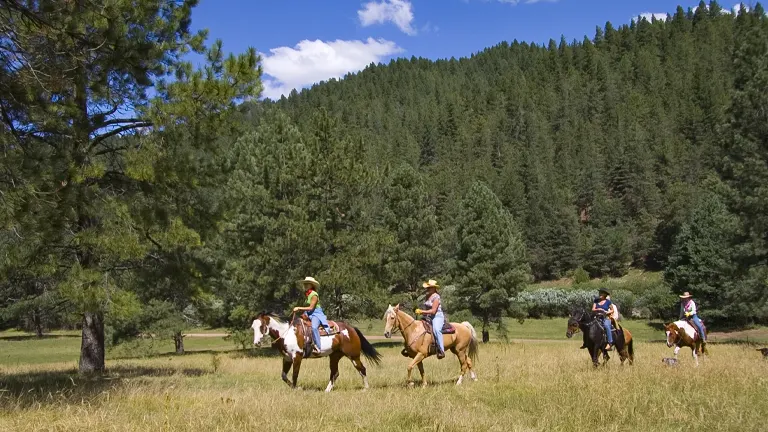
Simultaneously, the Lincoln National Forest is a playground for outdoor enthusiasts, offering a plethora of recreational opportunities. Hiking, picnicking, camping, mountain biking, and horseback riding are just a few activities that draw visitors year-round. The forest’s diverse trails cater to varying difficulty levels, accommodating casual strollers and avid hikers alike. Beyond terrestrial pursuits, the forest provides access to winter sports, with ski resorts like Ski Apache offering downhill skiing at elevations as high as 9,700 feet. Dispersed camping options and developed campgrounds ensure that visitors can immerse themselves in the serene beauty of Lincoln while adhering to sustainable recreational practices.
The Lincoln National Forest’s significance is not merely confined to its physical boundaries; it serves as an educational hub, enlightening visitors about responsible environmental practices and the delicate interplay between nature and human activities. As a unit of the U.S. Forest Service, the forest’s commitment to conservation, resource management, and recreation underscores its pivotal role in fostering a sustainable coexistence between people and the natural world. Whether it be the pristine wilderness areas, historic lookout towers, or the birthplace of Smokey Bear, the Lincoln National Forest stands as a testament to the enduring value of preserving and enjoying the wonders of our natural heritage.
Unique Location of Lincoln National Forest
Located within the southern Rocky Mountains of New Mexico, the Lincoln National Forest occupies a truly unique and captivating location. Spanning an expansive 1.1 million acres in the southeastern part of the state, this forest is distinguished by its diverse topography and ecological richness. The three major mountain ranges Sacramento, Guadalupe, and Capitan encompassing the forest contribute to its exceptional character. Elevations within the Lincoln National Forest range dramatically, from 4,000 to 11,500 feet, traversing five distinct life zones that transition from the arid Chihuahuan desert to the pristine sub-alpine forests. Such varied landscapes provide a habitat for a wide array of plant and animal species, making the forest a biological hotspot.
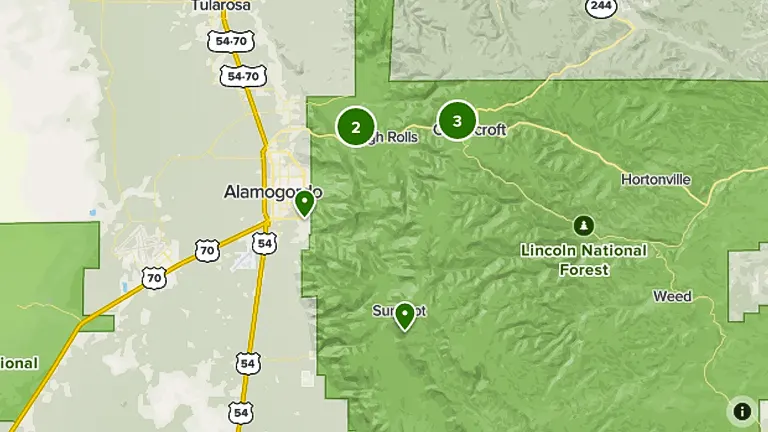
Adding to its uniqueness, the Lincoln National Forest is divided into three ranger districts: Sacramento, Smokey Bear, and Guadalupe, each offering its own set of breathtaking vistas and recreational opportunities. This forest not only serves as a haven for outdoor enthusiasts with activities like hiking, camping, and skiing but also stands as a testament to the resilience of nature in the face of changing environments. From the rugged beauty of the Capitan Mountains Wilderness to the pristine waters of the White Mountain Wilderness, the Lincoln National Forest’s unique location invites exploration, education, and appreciation for the remarkable ecological diversity found within its boundaries.
Diverse Vegetation and Plant Species in Lincoln National Forest
- Engelmann Spruce (Picea engelmannii): The Lincoln National Forest boasts a rich diversity of coniferous species, with Engelmann spruce being a prominent presence in the higher elevations, particularly in the sub-alpine forests. Recognizable by its tall stature and distinctive blue-green needles, Engelmann spruce thrives in the cooler and elevated regions of the forest.
- Ponderosa Pine (Pinus ponderosa): Dominating the mid-elevation zones, the Ponderosa pine is a key component of the Lincoln National Forest’s vegetation. With its characteristic tall trunk and golden-brown bark, this pine species forms extensive forests and plays a crucial role in shaping the overall ecosystem. The forest’s ability to support such diverse pine communities enhances its ecological resilience.
- Douglas Fir (Pseudotsuga menziesii): Flourishing across various elevations, the Douglas fir is a versatile and resilient evergreen within the Lincoln National Forest. Its dark green needles and distinctive cones contribute to the visual tapestry of the forest. This species adapts well to different soil types, showcasing the adaptability of the forest’s vegetation.
- Aspen (Populus tremuloides): Adding a touch of vibrancy to the landscape, aspen groves are scattered throughout the forest, particularly in areas with adequate sunlight. Known for their quivering leaves and unique white bark, aspen stands create visually stunning contrasts within the diverse vegetation of the Lincoln National Forest.
- Chihuahuan Desert Scrub: In the lower elevations, the Lincoln National Forest transitions into the Chihuahuan Desert scrub, characterized by hardy and drought-resistant vegetation. Desert shrubs such as creosote bush (Larrea tridentata) and yucca species adapt to the arid conditions, showcasing the remarkable range of plant life within the forest.
- Rare Cacti Species: The lower reaches of the forest are home to rare cacti species, adding a touch of uniqueness to the flora. These resilient desert plants adapted to harsh conditions, remind visitors of the ecological diversity encapsulated within the Lincoln National Forest.
- Engelmann Spruce-Subalpine Fir Forests: At the highest elevations, where the air is crisp and temperatures cooler, Engelmann spruce combines with subalpine fir (Abies lasiocarpa) to form enchanting forests. These ecosystems, found in the upper reaches of the Lincoln National Forest, contribute to the variety of life zones present in this expansive natural reserve.


Understanding the diverse vegetation and plant species within the Lincoln National Forest provides a glimpse into the intricate ecological tapestry that defines this remarkable landscape. From towering conifers to resilient desert flora, the forest’s plant life contributes to its status as a haven for biodiversity.
Fauna
- Rocky Mountain Elk (Cervus canadensis nelsoni): The Lincoln National Forest is home to the majestic Rocky Mountain Elk, a symbol of wild and untamed landscapes. These large herbivores roam the forest, particularly in the higher elevations, contributing to the rich biodiversity of the region. Their presence enhances the natural balance within the ecosystem and provides a thrilling sight for wildlife enthusiasts.
- Mule Deer (Odocoileus hemionus): Abundant across various elevations, mule deer are a common sight in the Lincoln National Forest. Recognizable by their large ears and distinctive bounding gait, these herbivores are well-adapted to the diverse habitats within the forest. They play a crucial role in the forest’s ecological dynamics as both grazers and prey for predators.
- Black Bear (Ursus americanus): The Lincoln National Forest provides a suitable habitat for the elusive black bear. These omnivores, known for their adaptability, find refuge in the forest’s diverse landscapes. While encounters with these bears are a rare treat for visitors, their presence highlights the forest’s role in supporting a healthy population of native wildlife.
- Cougar (Puma concolor): The Lincoln National Forest serves as a habitat for the elusive cougar, or mountain lion. These solitary and elusive predators play a crucial role in maintaining ecological balance by controlling herbivore populations. Their presence underscores the wilderness character of the forest and contributes to its role as a protected natural area.
- Mexican Gray Wolf (Canis lupus baileyi): As part of ongoing conservation efforts, the Lincoln National Forest is involved in the recovery of the endangered Mexican gray wolf. Reintroduction programs aim to reestablish sustainable populations of these wolves in their native habitats, contributing to the preservation of a species integral to the region’s ecological heritage.
- Wild Turkey (Meleagris gallopavo): The forest is alive with the vibrant presence of wild turkeys, particularly in the lower elevations. Their distinctive calls echo through the woodlands, adding a touch of wildness to the Lincoln National Forest. These birds contribute to the avian diversity of the region, attracting birdwatchers and nature enthusiasts.
- Golden Eagle (Aquila chrysaetos): Soaring high above the rugged landscapes, the golden eagle is a majestic raptor that calls the Lincoln National Forest home. These birds of prey contribute to the intricate web of predator-prey relationships within the ecosystem, showcasing the forest’s significance as a habitat for avian biodiversity.
- Rio Grande Cutthroat Trout (Oncorhynchus clarkii virginalis): The forest’s waterways are inhabited by the Rio Grande cutthroat trout, a native and threatened fish species. Conservation efforts within the Lincoln National Forest aim to protect and restore aquatic habitats, ensuring the survival of this iconic trout species and maintaining the health of freshwater ecosystems.
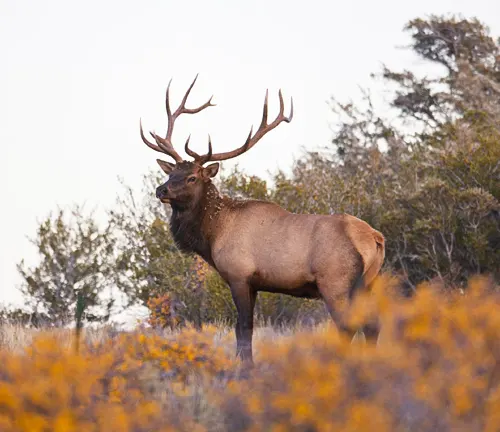
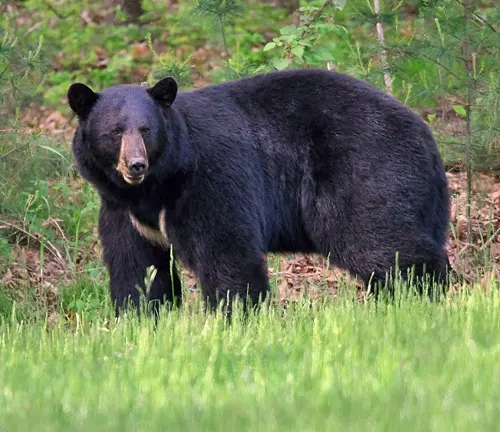
Understanding the diverse fauna within the Lincoln National Forest provides a glimpse into the complex and interconnected web of life thriving in this natural haven. From iconic mammals to elusive predators and avian wonders, the forest stands as a testament to the importance of preserving habitats for the flourishing of diverse wildlife species.
Attractions in Lincoln National Forest
1. Smokey Bear Historical Park

Located within the Lincoln National Forest is the Smokey Bear Historical Park, a must-visit destination for history and nature enthusiasts. This park commemorates the legacy of Smokey Bear, the iconic symbol of wildfire prevention. Visitors can explore exhibits, learn about the history of Smokey Bear, and even pay homage to the real-life bear who became the living embodiment of fire safety.
2. Capitan Mountains Wilderness
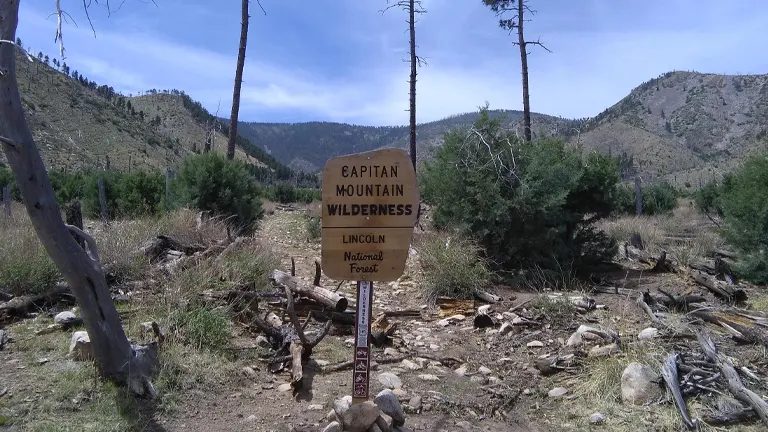
The Capitan Mountains Wilderness, part of the Smokey Bear Ranger District, offers a pristine and rugged wilderness experience. Designated in 1980, this wilderness area encompasses 34,000 acres of public lands with rare east–west mountain ranges. Accessible via trails requiring 4-wheel drive vehicles, it provides a haven for those seeking solitude, scenic beauty, and a glimpse into untouched natural landscapes.
3. White Mountain Wilderness
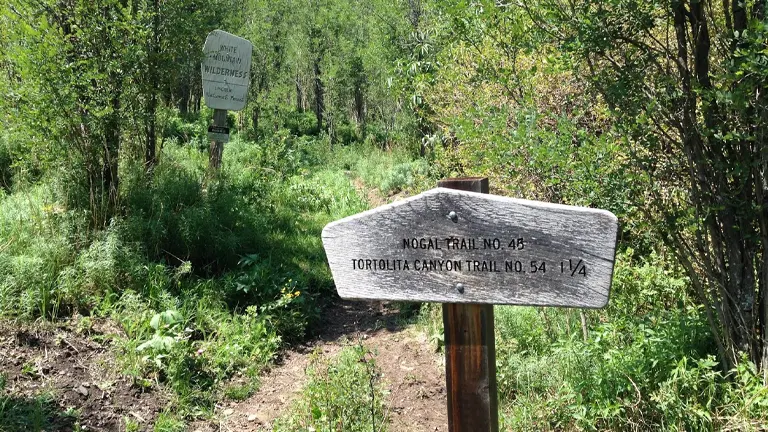
The White Mountain Wilderness, established in 1964 and expanded in 1980, is a haven for hikers, backpackers, and nature enthusiasts. Spanning over 44,000 acres, this wilderness area follows the main ridge of the White Mountains, showcasing diverse ecosystems, side canyons, and year-round streams. Hiking trails, accessible by both foot and horse, lead adventurers through this pristine and undeveloped wilderness.
4. Ski Apache
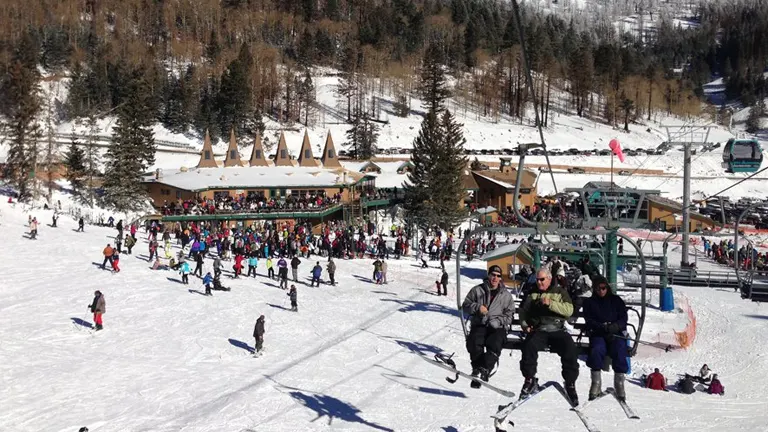
For those seeking outdoor recreation in the winter months, Ski Apache stands as a premier destination. Located in the Smokey Bear Ranger District, this downhill ski resort offers exhilarating experiences with a base elevation of 9,700 feet. Operated by the Mescalero Apache Tribe, Ski Apache provides a snowy playground against the backdrop of the Lincoln National Forest, attracting skiers and snowboarders throughout the winter season.
5. Sitting Bull Falls
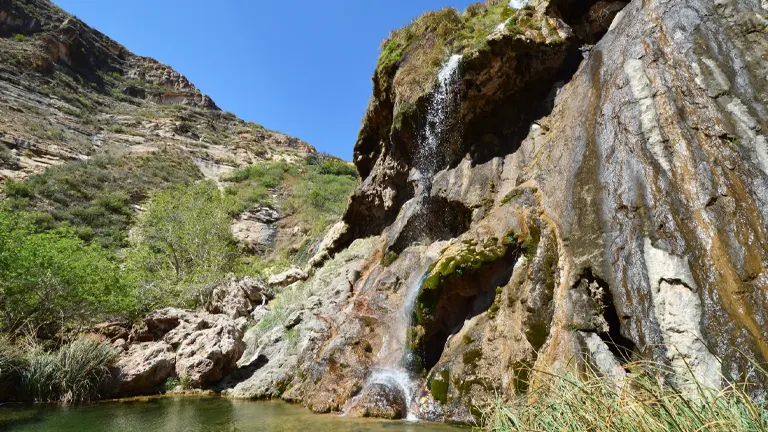
The Sitting Bull Falls recreation site showcases one of the most beautiful natural attractions within the Lincoln National Forest. The falls, surrounded by scenic vistas, reveal stunning views of natural caves and a pristine waterfall. Accessible by a short hike, this area is not only a visual delight but also a refreshing escape, inviting visitors to immerse themselves in the beauty of untouched nature.
6. Lookout Towers
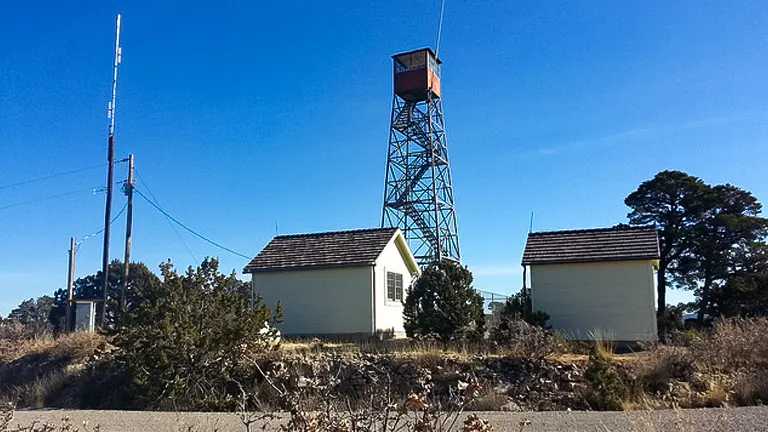
Scattered across the forest are historic fire lookout towers, providing not only a glimpse into the past but also stunning panoramic views of the surrounding landscapes. These structures, some listed on the National Register of Historic Places, include the Montjeau Lookout and the Sacramento Lookout. Visitors can explore these towers, offering a unique perspective on the vastness of the Lincoln National Forest.
7. Rio Penasco
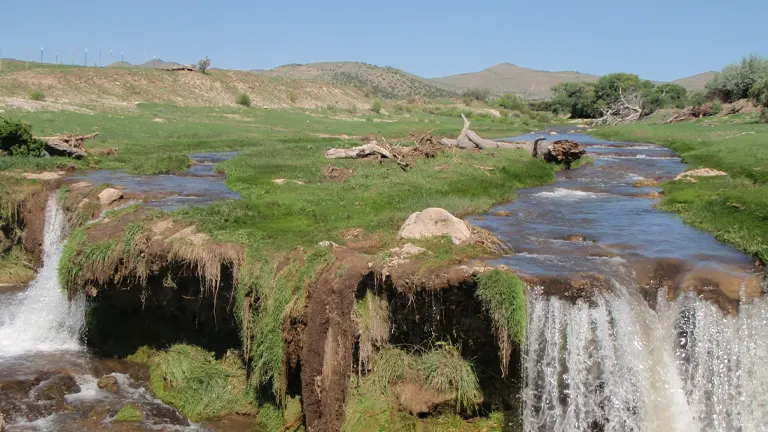
The Rio Penasco, a prominent waterway within the Lincoln National Forest, offers a serene and picturesque setting for outdoor activities. Whether it’s fishing for Rio Grande cutthroat trout, picnicking along its banks, or simply enjoying the peaceful ambiance, Rio Penasco provides a natural retreat where visitors can connect with the forest’s aquatic ecosystems.
8. Dispersed Camping Areas
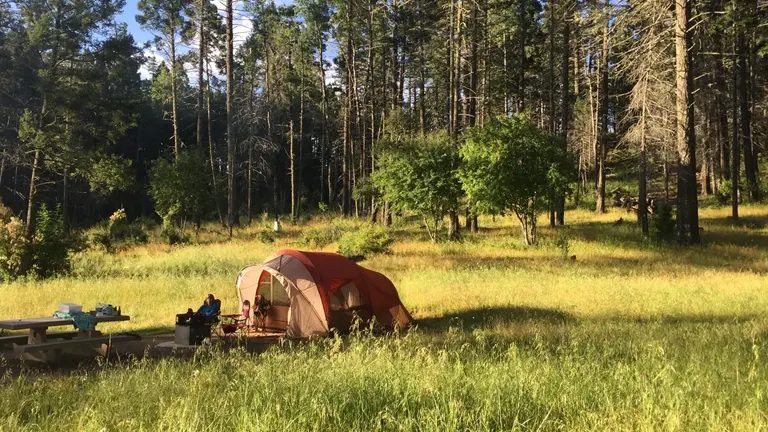
The Lincoln National Forest provides opportunities for dispersed camping, allowing visitors to connect with nature in a more secluded setting. Popular areas like the Upper Bonito Dispersed Camping Area near Ruidoso and Lower Karr Canyon south of Cloudcroft offer a chance to camp amidst the diverse vegetation and landscapes, providing an immersive experience in the heart of the forest.
Exploring the attractions within the Lincoln National Forest reveals a tapestry of natural wonders, historical significance, and recreational opportunities. From the legacy of Smokey Bear to the untamed beauty of wilderness areas, each attraction invites visitors to engage with the diverse landscapes and heritage preserved within this expansive forest.
Recreational Activities in the Lincoln National Forest
1. Hiking
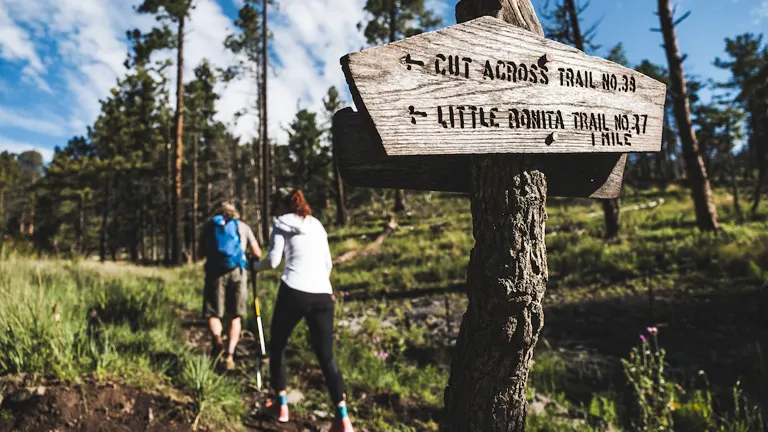
Hiking enthusiasts will find a haven in the Lincoln National Forest with its extensive trail network that caters to all skill levels. From easy afternoon walks to challenging trails for seasoned hikers, the forest offers diverse terrains, including mountainous paths, scenic vistas, and lush woodlands. Each trail provides an opportunity to immerse oneself in the natural beauty of the forest, with the added allure of glimpses into its rich biodiversity.
2. Mountain Biking
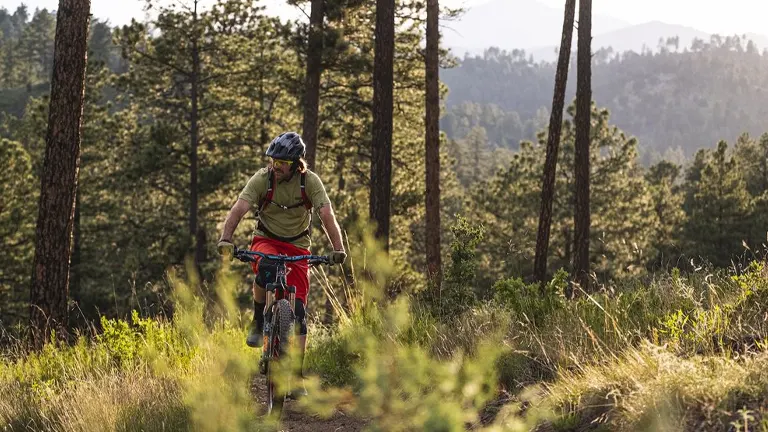
The Lincoln National Forest invites mountain biking enthusiasts to explore its varied landscapes through designated trails. Whether navigating through the Sacramento district or the Smokey Bear District, bikers can enjoy thrilling rides amid diverse vegetation and challenging terrains. The forest’s commitment to outdoor recreation is evident in the carefully crafted trails that provide a perfect blend of adventure and natural exploration.
3. Camping
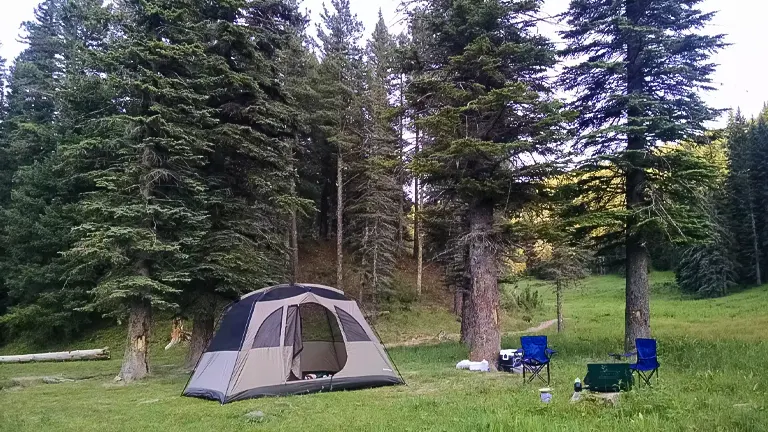
Camping within the Lincoln National Forest is a quintessential outdoor experience. The forest accommodates both developed and dispersed camping, allowing visitors to choose between established campgrounds or more secluded spots amidst nature. Whether under the towering trees of the Sacramento Mountains or in the serene wilderness of the Smokey Bear district, camping offers a chance to connect with the forest’s tranquility.
4. Off-Roading (OHVs)

Off-Highway Vehicle (OHV) enthusiasts can revel in the designated forest service roads and trails that cater to motorcycles and ATVs. The Lincoln National Forest, particularly in the Sacramento and Smokey Bear Ranger Districts, provides an exciting playground for those seeking adventurous off-road experiences. Riders can consult the Motor Vehicle User Map to explore areas open to OHVs and enjoy the thrill of exploring the forest on wheels.
5. Skiing and Snowboarding

Winter transforms the Lincoln National Forest into a snowy wonderland, opening up opportunities for skiing and snowboarding enthusiasts. Ski Apache, a downhill ski resort in the Smokey Bear Ranger District, offers a winter paradise with its groomed slopes and snowy landscapes. The forest becomes a playground for winter sports, allowing visitors to experience the thrill of downhill adventures against a backdrop of snow-covered trees.
6. Fishing

Anglers will find solace along the Rio Penasco and other waterways within the forest, where the Rio Grande cutthroat trout calls home. Fishing in the Lincoln National Forest provides not just a recreational activity but also a chance to engage with the forest’s aquatic ecosystems. The pristine waters and diverse fish species contribute to a rewarding experience for both novice and experienced anglers.
7. Equestrian Trails

For horseback riding enthusiasts, the Lincoln National Forest opens up a network of trails that traverse diverse landscapes. While there are no designated equestrian campgrounds, pack, and saddle animals are welcome on the majority of trails within the forest. Riding through the forest provides a unique perspective, allowing equestrians to appreciate the natural beauty while enjoying a peaceful journey.
8. Picnicking
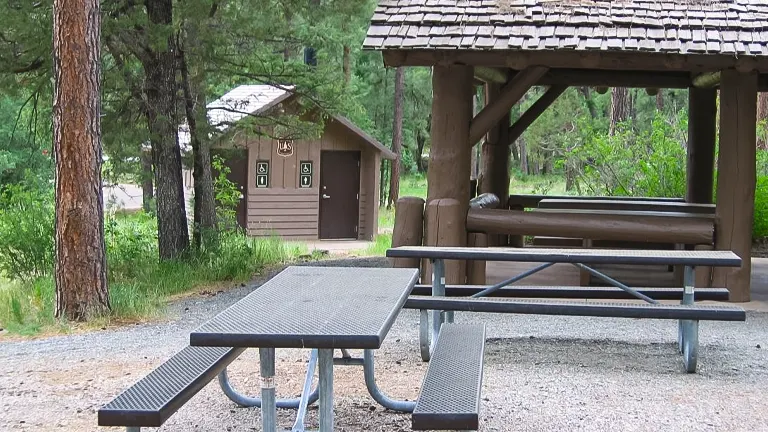
Scattered throughout the forest are idyllic spots perfect for picnicking. Whether at Sitting Bull Falls recreation site, offering views of natural caves, or by the Rio Penasco, picnickers can relish the beauty of the surroundings. Picnicking provides a relaxed way to enjoy the Lincoln National Forest, combining outdoor dining with the serenity of nature.
Engaging in recreational activities within the Lincoln National Forest offers a diverse range of experiences, from adrenaline-pumping adventures to serene moments of connection with nature. The forest’s commitment to providing a spectrum of recreational opportunities underscores its role as a natural sanctuary for outdoor enthusiasts.
Facilities and Amenities in Lincoln National Forest
- Campgrounds: The Lincoln National Forest boasts a range of campgrounds, both developed and dispersed, ensuring that visitors can tailor their camping experience to their preferences. Developed campgrounds often provide amenities such as picnic tables, fire rings, and restroom facilities. These sites, strategically located throughout the forest, offer a comfortable and accessible way to immerse oneself in the natural surroundings. Dispersed camping, available in designated areas, allows for a more secluded and primitive experience, giving campers the freedom to choose their spot amidst the forest.
- Visitor Centers: Scattered across the Lincoln National Forest are visitor centers that serve as gateways to understanding and appreciating the forest’s unique features. These centers provide valuable information, maps, and educational exhibits about the forest’s flora, fauna, and recreational opportunities. Knowledgeable staff members are on hand to assist visitors in planning their adventures, ensuring a well-informed and enriching experience within the forest.
- Trails and Trailheads: The forest is crisscrossed with a network of trails catering to various recreational activities. Trailheads, equipped with parking facilities and informational signage, serve as entry points to these scenic pathways. Whether embarking on a hiking expedition, mountain biking adventure, or horseback riding journey, the well-marked trails and accessible trailheads make exploring the Lincoln National Forest an organized and enjoyable endeavor.
- Picnic Areas: Nestled amidst the towering trees and picturesque landscapes are designated picnic areas within the Lincoln National Forest. These spots, equipped with picnic tables and often featuring scenic viewpoints, offer a tranquil setting for outdoor dining. Whether situated near a babbling creek or overlooking a mountain vista, these picnic areas provide an opportunity for visitors to pause, refresh, and savor the natural beauty surrounding them.
- Lookout Towers: Given the forest’s commitment to fire prevention, lookout towers play a crucial role in surveillance. Of the historic lookout towers in the Lincoln National Forest, some remain open to the public. These towers, perched atop scenic vantage points, offer breathtaking panoramic views of the forest and its surroundings. Visitors can climb to the top for a unique perspective and gain insights into the forest’s vast expanse.
- Winter Recreation Areas: Embracing the winter season, the Lincoln National Forest provides designated areas for snow-related recreation. Ski Apache, a downhill ski resort in the Smokey Bear Ranger District, becomes a hub for skiing and snowboarding enthusiasts. Additionally, the Upper Karr Canyon Area near Cloudcroft transforms into a winter wonderland, offering opportunities for snow sledding, tubing, and cross-country skiing. These winter recreation areas diversify the forest’s offerings, ensuring year-round engagement.
- Fishing Spots: For anglers seeking serene fishing experiences, the Lincoln National Forest features accessible fishing spots along waterways like the Rio Penasco. These locations provide opportunities to engage with the forest’s aquatic ecosystems while enjoying the sport of fishing. Pristine waters and diverse fish species contribute to a fulfilling angling experience, making these spots popular destinations for both novice and seasoned anglers.
- Educational Programs: In alignment with its conservation mission, the Lincoln National Forest offers educational programs aimed at fostering an understanding of the forest’s ecological significance. These programs, often conducted at visitor centers or through ranger-led initiatives, cover topics such as wildlife conservation, forest ecology, and responsible recreation. Engaging in these educational opportunities allows visitors to develop a deeper appreciation for the forest’s role in environmental preservation.
The facilities and amenities within the Lincoln National Forest are meticulously designed to enhance the visitor experience. From well-equipped campgrounds to informative visitor centers, the forest provides a comprehensive infrastructure that caters to the diverse needs and preferences of those seeking to explore its natural wonders.
Tips for Visiting Lincoln National Forest
- Plan Ahead and Check Regulations: Before embarking on your journey to the Lincoln National Forest, it’s essential to plan ahead and familiarize yourself with the forest’s regulations. Check for any permits or passes required for specific activities, such as camping or fishing. Understanding the rules ensures a smooth and responsible visit, contributing to the conservation efforts of this natural treasure.
- Weather Awareness: Southern New Mexico’s climate can vary, so it’s crucial to stay informed about the weather conditions. The Lincoln National Forest spans diverse elevations, from desert floors to alpine peaks, influencing temperatures and precipitation. Dressing appropriately and being prepared for sudden weather changes will contribute to a comfortable and enjoyable experience.
- Pack Essentials: Whether you’re planning a day hike or an extended camping trip, packing essentials is key. Carry sufficient water, snacks, a map, and any necessary gear for your chosen activity. Adequate preparation ensures you can fully immerse yourself in the forest without being hindered by unexpected challenges.
- Respect Wildlife and Vegetation: The Lincoln National Forest is a haven for diverse wildlife and plant species. As a visitor, it’s essential to respect their natural habitats. Keep a safe distance from animals, refrain from feeding them, and stay on designated trails to minimize impact on the vegetation. Responsible behavior preserves the delicate balance of the ecosystem.
- Follow Leave No Trace Principles: Adhering to Leave No Trace principles is fundamental to conserving the Lincoln National Forest’s beauty. Pack out all trash, stay on designated trails, and avoid disturbing natural features. By minimizing your environmental footprint, you contribute to the long-term sustainability of this remarkable landscape.
- Check Trail Conditions: Trail conditions can vary based on the season and recent weather events. Before setting out on a hike or any outdoor activity, check for updated trail conditions. This information is often available at visitor centers, ranger stations, or online resources. Being aware of trail conditions ensures a safe and enjoyable exploration of the forest.
- Wildfire Prevention: Given the forest’s commitment to preventing wildfires, it’s crucial to follow fire safety guidelines. Obey any fire restrictions in place, properly extinguish campfires, and report any signs of smoke. By actively participating in wildfire prevention efforts, visitors play a crucial role in maintaining the health and safety of the Lincoln National Forest.
- Educate Yourself about Flora and Fauna: Enhance your experience in the Lincoln National Forest by educating yourself about the diverse flora and fauna that inhabit the region. Field guides or ranger-led programs can provide valuable insights into the forest’s ecological significance. Understanding the natural elements around you adds depth to your connection with this pristine environment.
- Engage with Ranger Programs: Ranger-led programs and educational initiatives offer valuable opportunities to learn more about the Lincoln National Forest. Check the schedule of ranger programs at visitor centers or online platforms. These programs often cover topics such as wildlife conservation, forest ecology, and local history, enriching your visit with informative experiences.
- Practice Safety Measures: Safety should be a priority during your visit. Inform someone of your plans, especially if you’re venturing into more remote areas. Carry a first aid kit, be cautious of wildlife encounters, and be aware of your surroundings. By prioritizing safety, you can fully enjoy the diverse recreational opportunities the Lincoln National Forest has to offer while minimizing risks.
Recommendation
I highly encourage you to venture into the Lincoln National Forest, where you’ll encounter a mesmerizing fusion of natural splendor and historical significance. This forest is celebrated for its diverse ecosystems, iconic landmarks, and abundant recreational possibilities, providing a distinctive and immersive adventure. Engage in contemplative outdoor pursuits like hiking and wildlife observation, actively participating in ongoing conservation initiatives. The picturesque trails, historical points of interest, and collaborative conservation endeavors establish the Lincoln National Forest as a crucial destination for those in search of a seamless blend of nature and recreational discovery.
Conclusion
In conclusion, the Lincoln National Forest emerges not just as a geographical expanse but as a living testament to the delicate dance between humanity and nature. Across its 1.1 million acres, this haven in the southern Rocky Mountains encapsulates a wealth of ecosystems, elevations, and historical narratives, creating a mosaic of experiences for those who venture within its boundaries. From the iconic Smokey Bear, symbolizing a commitment to fire prevention, to the diverse flora and fauna inhabiting its wilderness, the forest fosters a profound connection with the natural world. It invites individuals to partake in a myriad of recreational activities, from the serenity of reflective hikes to the exhilaration of winter sports. As visitors traverse its scenic trails and contribute to ongoing conservation efforts, the Lincoln National Forest beckons them to become stewards of its enduring legacy. In this realm where the echoes of history meet the whispers of the wind through pine trees, the forest stands not just as a destination but as an evolving chronicle of our shared responsibility to preserve and cherish the wonders of the great outdoors.
FAQs
- What makes the Lincoln National Forest unique among other national forests?
The Lincoln National Forest stands out for its diverse ecosystems, encompassing everything from the arid Chihuahuan desert to lush sub-alpine forests. Its three major mountain ranges, historic sites, and the birthplace of Smokey Bear contribute to its distinctive character. - Are there any notable historical sites within the Lincoln National Forest?
Yes, the forest is steeped in history, notably linked to the Lincoln County War and serving as the birthplace of Smokey Bear. Visitors can explore remnants of the conflict and learn about the forest’s significant role in the conservation movement. - What recreational activities does the Lincoln National Forest offer during the winter months?
Winter enthusiasts can indulge in snow sports at Ski Apache, a downhill ski resort located within the forest. Additionally, designated trails cater to cross-country skiing, snowboarding, and snow play areas. - Is dispersed camping allowed in the Lincoln National Forest, and what does it entail?
Yes, dispersed camping is permitted in certain areas, allowing visitors to camp up to 300 feet from public roads. It provides a primitive camping experience free of charge, although amenities such as water and restrooms are not available. - What conservation initiatives can visitors actively participate in within the Lincoln National Forest?
Visitors can contribute to ongoing conservation efforts by practicing Leave No Trace principles, participating in organized clean-up events, and supporting educational programs aimed at preserving the delicate balance of the forest’s ecosystems. - Are there any endangered plant or animal species in the Lincoln National Forest?
The forest harbors a rich biodiversity, including some species considered threatened or endangered. Conservation efforts focus on protecting habitats and promoting awareness to ensure the survival of these vital components of the ecosystem. - Can visitors access fire lookout towers within the Lincoln National Forest?
Yes, several fire lookout towers offer public access, providing panoramic views of the forest. Some of these structures, like the Montjeau Lookout, are historical landmarks and offer insight into the forest’s fire prevention measures. - How does the Lincoln National Forest contribute to the local economy?
The forest plays a crucial role in the local economy through activities such as grazing, timber harvesting, and tourism. Livestock grazing rights, timber resources, and recreational tourism collectively contribute to the economic well-being of the surrounding communities.
As you leave Lincoln National Forest behind, you can’t help but feel a sense of awe and wonder at the natural beauty you’ve experienced. From the rugged peaks of the Sacramento Mountains to the sweeping vistas of the Chihuahuan Desert, this forest is a true gem of the American Southwest. Whether you’re a seasoned hiker, an avid birdwatcher, or simply a lover of the great outdoors, Lincoln National Forest is a destination you won’t soon forget. So why not pack your bags, hit the trails, and discover the wonders of this incredible wilderness for yourself?


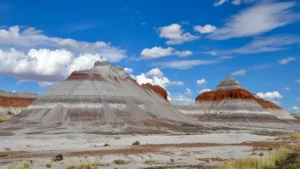
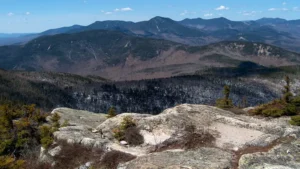

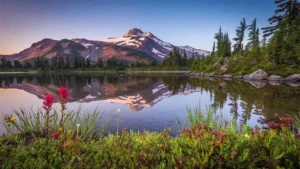
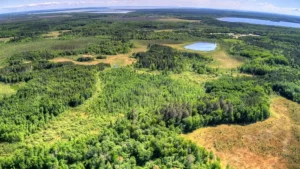
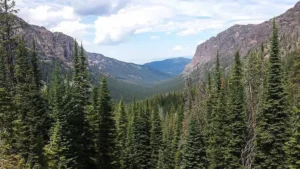
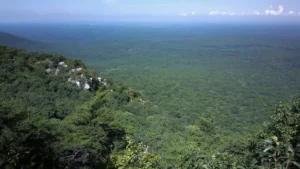
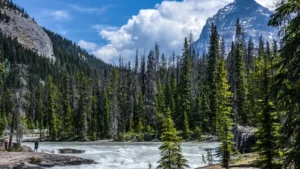
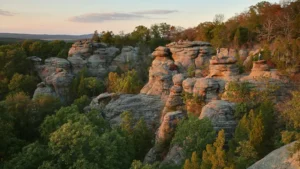

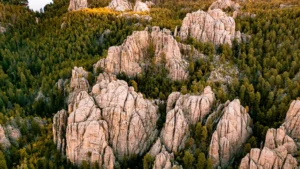

Leave your comment